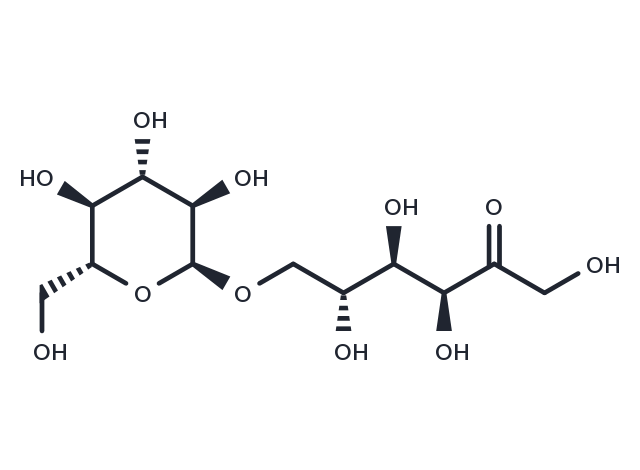Powder: -20°C for 3 years | In solvent: -80°C for 1 year


PALATINOSE (TNP-470) is a natural occurring disaccharide composed of alpha-1,6-linked glucose and fructose。 PALATINOSE has a beneficial effect on liver metabolic functions and might therefore be a good substitute for sucrose as a sweetener.

| Pack Size | Availability | Price/USD | Quantity |
|---|---|---|---|
| 100 mg | In stock | $ 50.00 | |
| 1 mL * 10 mM (in DMSO) | In stock | $ 50.00 |


| Description | PALATINOSE (TNP-470) is a natural occurring disaccharide composed of alpha-1,6-linked glucose and fructose。 PALATINOSE has a beneficial effect on liver metabolic functions and might therefore be a good substitute for sucrose as a sweetener. |
| In vivo | Compared with the mice fed the sucrose diet, the palatinose diet resulted in lower serum glucose, insulin, and total cholesterol levels, as well as lower expression of several lipogenesis-related genes and proteins. Histological analysis of hepatic cells of palatinose-fed mice showed normal morphology. In conclusion, palatinose intake results in lower hepatic lipogenesis and better cholesterol homeostasis than the effects from sucrose. |
| Synonyms | TNP-470, Isomaltulose |
| Molecular Weight | 342.3 |
| Formula | C12H22O11 |
| CAS No. | 13718-94-0 |
Powder: -20°C for 3 years | In solvent: -80°C for 1 year
DMSO: 60 mg/ml (175.28 mM)
You can also refer to dose conversion for different animals. More
bottom
Please see Inhibitor Handling Instructions for more frequently ask questions. Topics include: how to prepare stock solutions, how to store products, and cautions on cell-based assays & animal experiments, etc.
PALATINOSE 13718-94-0 Others TNP470 TNP-470 Isomaltulose TNP 470 inhibitor inhibit
